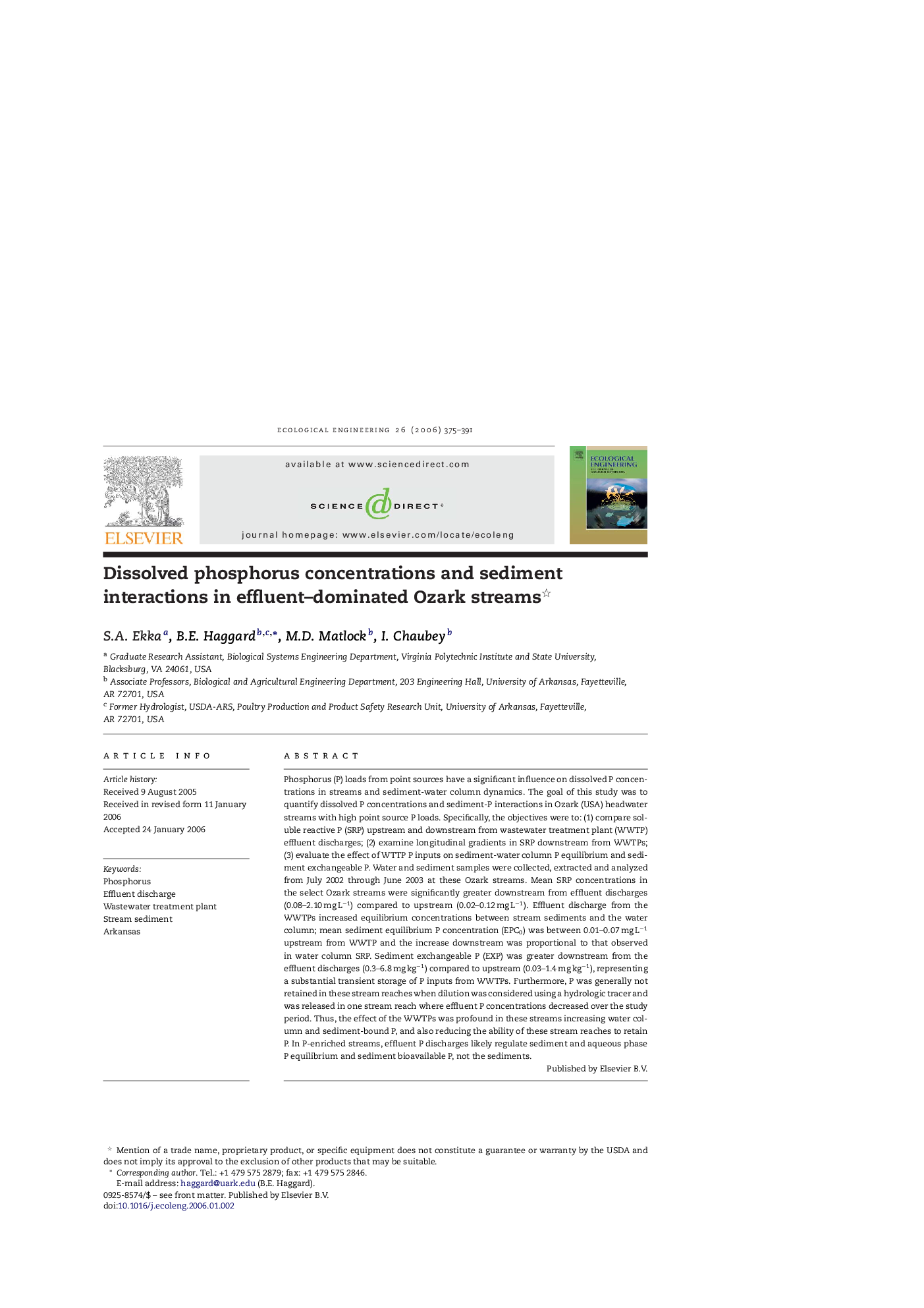| Article ID | Journal | Published Year | Pages | File Type |
|---|---|---|---|---|
| 4391332 | Ecological Engineering | 2006 | 17 Pages |
Phosphorus (P) loads from point sources have a significant influence on dissolved P concentrations in streams and sediment-water column dynamics. The goal of this study was to quantify dissolved P concentrations and sediment-P interactions in Ozark (USA) headwater streams with high point source P loads. Specifically, the objectives were to: (1) compare soluble reactive P (SRP) upstream and downstream from wastewater treatment plant (WWTP) effluent discharges; (2) examine longitudinal gradients in SRP downstream from WWTPs; (3) evaluate the effect of WTTP P inputs on sediment-water column P equilibrium and sediment exchangeable P. Water and sediment samples were collected, extracted and analyzed from July 2002 through June 2003 at these Ozark streams. Mean SRP concentrations in the select Ozark streams were significantly greater downstream from effluent discharges (0.08–2.10 mg L−1) compared to upstream (0.02–0.12 mg L−1). Effluent discharge from the WWTPs increased equilibrium concentrations between stream sediments and the water column; mean sediment equilibrium P concentration (EPC0) was between 0.01–0.07 mg L−1 upstream from WWTP and the increase downstream was proportional to that observed in water column SRP. Sediment exchangeable P (EXP) was greater downstream from the effluent discharges (0.3–6.8 mg kg−1) compared to upstream (0.03–1.4 mg kg−1), representing a substantial transient storage of P inputs from WWTPs. Furthermore, P was generally not retained in these stream reaches when dilution was considered using a hydrologic tracer and was released in one stream reach where effluent P concentrations decreased over the study period. Thus, the effect of the WWTPs was profound in these streams increasing water column and sediment-bound P, and also reducing the ability of these stream reaches to retain P. In P-enriched streams, effluent P discharges likely regulate sediment and aqueous phase P equilibrium and sediment bioavailable P, not the sediments.
